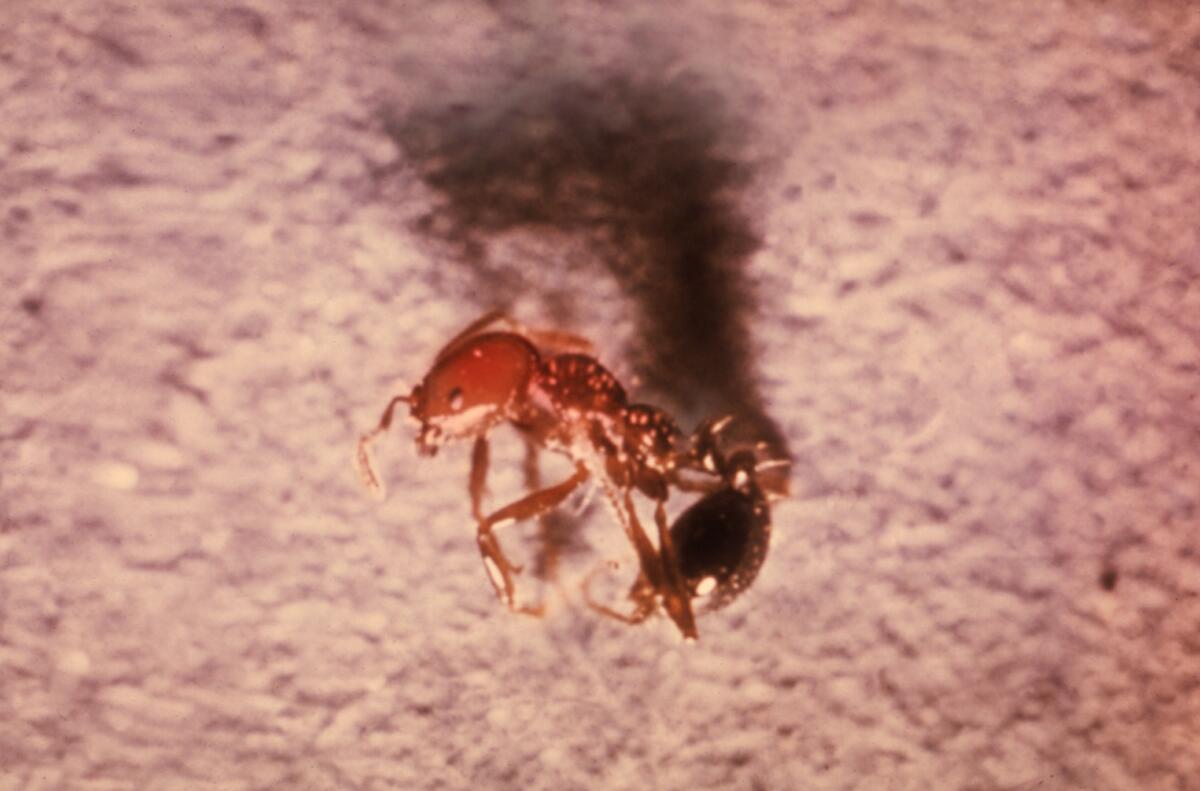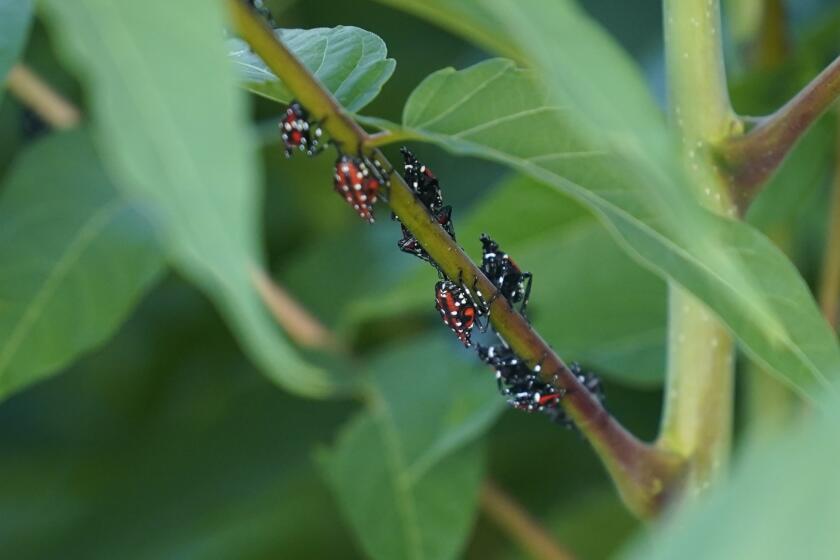An infestation of ‘aggressive’ red fire ants hits Santa Barbara County

- Share via
A new population of “highly aggressive” red imported fire ants has infested a private property in Montecito, according to Santa Barbara County officials.
The ants are capable of biting and stinging humans, pets and livestock, typically in defense of their nest or colony, according to a news release from the Santa Barbara County Agricultural Commissioner’s Office. The venom from an ant’s sting can “cause painful pustules on the skin, and can be particularly dangerous, even fatal, to sensitive groups or those with an allergy to the venom.”
Officials were alerted to the presence of the red imported fire ants on the Montecito property back in 2023 and continued to monitor the site when they discovered this year that the population had infested the area.
“We believe it came from a licensed nursery stock seller from Riverside County,” said Deputy Agricultural Commissioner Stephanie Stark. “One of the ways [the red imported fire ant] gets moved is through contaminated or infested soil.”
Native to South America, the ants have long been a thorn in the side of pest control officials across Southern states such as Texas, which spends about $1.2 billion each year trying to control ant populations. Stark said that Santa Barbara County undergoes a rigorous and stringent process to vet produce shipped in from quarantine zones that are infested with red imported fire ants.
But those measures haven’t stopped the ants from making their way up north. The last time Santa Barbara dealt with this invasive species was in 2017, and it’s likely the county will face future episodes. To date, Santa Barbara County has spent more than $15,000 to eradicate the red imported fire ants whenever they appear, Stark said.
While red imported fire ants don’t eat agricultural produce, “they sting people and animals, they threaten wildlife. They can damage electrical equipment, and also can displace other native ants in an area because they can use [their venom] against other ants too,” said Siavash Taravati, an entomologist and integrated pest management advisor with the University of California Agriculture and Natural Resources.
The goldspotted oak borer is just 14 miles from the Santa Monica Mountains’ 600,000 oak trees and threatens to devastate forests throughout California, harming wildlife and increasing fire risks.
The invasive insect has been a nuisance for Californian pest control officials ever since they waged war on the ant in the late ’90s and early 2000s. In Riverside, where Taravati is based, the ants have such a stronghold that removing them is nearly impossible, he said. But he thinks Santa Barbara County has a chance of stopping their spread.
The county “has it only in one area,” said Taravati, who’s advising county officials on the complete removal of the red imported fire ant. “We hope that we can eradicate it and prevent it from getting spread to other parts of the county,” he said.
Inexperienced pest management workers might try to pour liquid insecticide on red imported fire ant nests, Taravati said, but it’s not so simple. “If you miss one single queen, she can later on lay more eggs, and then the whole problem comes back,” he said.
The red imported fire ants don’t have many natural predators in Southern California, except for phorid flies. The key to killing a local colony of red imported fire ants is using a combination of chemical drenches and greasy bait, because the carnivorous ants love protein.
Eggs of the spotted lanternfly, an invasive species that’s wreaked havoc on crops across more than a dozen states, were recently discovered in California.
“[Foragers] feed on the bait. They bring it back to the nest to feed their larvae and feed their queen or queens in the colony,” Taravati said. “These baits are designed to be slow, because if they kill the ants super fast, there won’t be enough time to pass the toxicants or insecticide to the queen and the rest of the colony.”
At first it might be hard to distinguish the red imported fire ant from the sugar-loving Argentine ant, but a key distinction is the red imported fire ants’ aggressive nature.
Mark Hoddle, director of the Center for Invasive Species Research at UC Riverside, said his first encounter with the red imported fire ants was in Louisiana while looking for a different invasive species in a citrus tree. He inadvertently stepped on a mound and was quickly swarmed by angry red imported fire ants that bit his legs, leaving behind painful red blisters all over his skin.
Luckily, Hoddle was able to walk away, but others have not be so lucky. In rare cases, people have died after numerous bites from the venomous red imported fire ant.
“[Death is] a risk for anybody that’s susceptible to anaphylactic shock,” said Hoddle.






